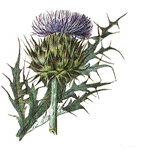Papers in the Biological Sciences

Svata M. Louda Publications
Document Type
Article
Date of this Version
1997
Abstract
Native thistles, in contrast to exotic species, are seldom noxious weeds. In this study, we evaluated one hypothesis for this difference: that the growth and fitness of native thistles are limited by natural enemies. Specifically, we tested the effect of insect foliage feeding on the survival and growth of large and small rosettes of tall thistle, Cirsium altissimum, using an insecticide exclusion experiment. Large juveniles were proportionally more damaged than were small ones. Insecticide reduced insect feeding, including overall intensity of plant damage and area removed or damaged on each of the two longest leaves, compared to controls treated only with water. As a result, both leaf growth and plant size increased significantly by the end of the growing season. Growth parameters showing major increases with the reduction in insect herbivory included upper rootcrown diameter, the total number of leaves, and the length of the two longest leaves on both large and small rosettes. Insecticide also reduced the mortality of large juveniles to half that of the controls. Thus, the study shows that the suite of naturally occurring, coevolved, foliage-feeding insects significantly reduces the growth and survival of rosettes of this native thistle under field conditions. The results provide strong support for the hypothesis underlying biological control of weeds programs.


Comments
Published in Ecological Applications 7: 4 (1997), pp. 1330-1340. Copyright 1997 by the Ecological Society of America. Used by permission.